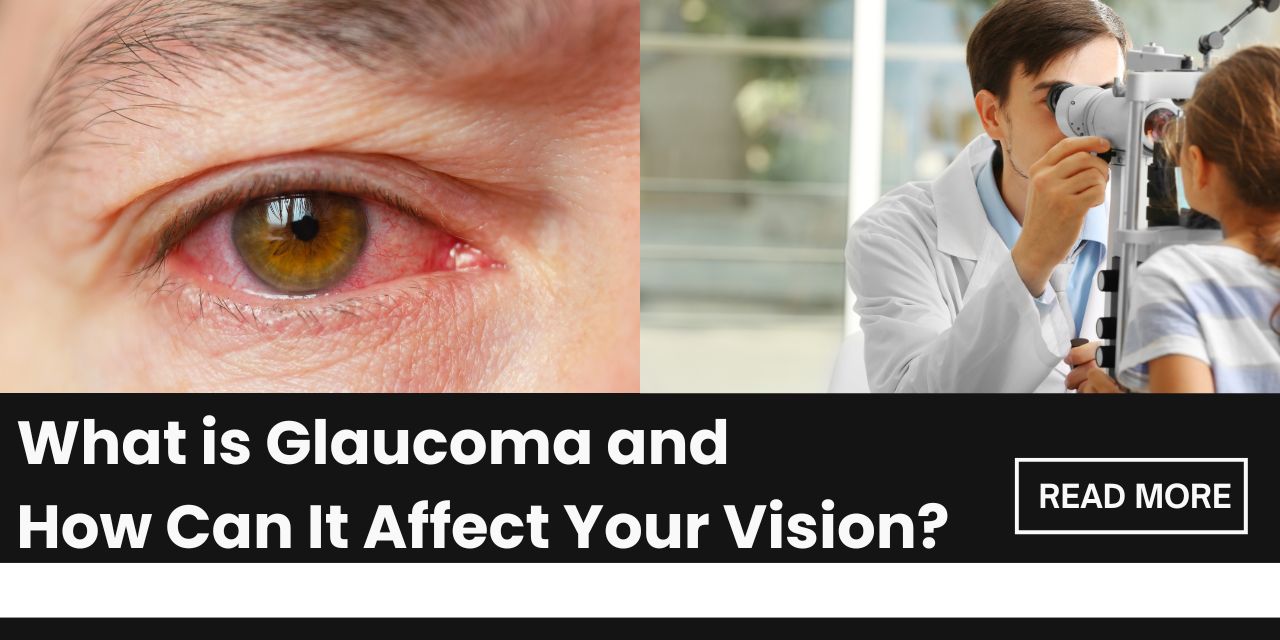Glaucoma is a serious eye condition that can lead to vision loss if not properly managed. It involves damage to the optic nerve, which is crucial for sending visual information from the eye to the brain. Understanding glaucoma is essential for early detection and effective treatment. This article will provide an overview of the causes, symptoms, and risk factors associated with glaucoma to help you stay informed and proactive about your eye health.
What is Glaucoma?
Glaucoma refers to a group of eye disorders that result in damage to the optic nerve, often due to increased pressure within the eye, known as intraocular pressure (IOP). This damage can lead to gradual and irreversible vision loss. Glaucoma is one of the leading causes of blindness worldwide, but with early detection and proper management, its progression can be controlled.
Causes of Glaucoma
➽ Increased Intraocular Pressure (IOP): The most common cause of glaucoma is elevated IOP. This pressure is caused by an imbalance in the production and drainage of the eye’s aqueous humor, a fluid that maintains eye shape and nourishes the eye.
➽ Genetic Factors
Family history plays a significant role in glaucoma risk. If you have a family member with glaucoma, your risk of developing the condition is higher.
➽ Eye Anatomy
Certain structural characteristics of the eye can increase susceptibility to glaucoma. For instance, a narrow drainage angle in the eye can obstruct fluid flow, leading to higher IOP.
➽ Age
The risk of developing glaucoma increases with age. It is more common in individuals over the age of 60.
➽ Medical Conditions
Conditions like diabetes, high blood pressure, and certain types of eye injuries can increase the risk of glaucoma.
➽ Use of Steroid Medications
Long-term use of corticosteroids can lead to secondary glaucoma, especially if used in high doses.
Symptoms of Glaucoma
Glaucoma often progresses slowly and may not present symptoms until significant damage has occurred. Here are some common signs to watch for:
➱ Gradual Vision Loss: The most common early symptom is a gradual loss of peripheral vision. This can make it difficult to notice changes until the condition is advanced.
➱Tunnel Vision: As the disease progresses, central vision may remain intact while peripheral vision diminishes, creating a tunnel-like vision.
➱Severe Eye Pain: In acute cases, especially with closed-angle glaucoma, severe eye pain, headache, and nausea can occur.
➱Blurred Vision: Some individuals may experience blurred vision or see halos around lights, particularly in advanced stages of the disease.
➱Redness in the Eye: This can be a sign of increased pressure or inflammation.
Risk Factors for Glaucoma
➢Family History: Having a family member with glaucoma significantly increases your risk.
➢Age: Individuals over 60 years old are at a higher risk.
➢Race and Ethnicity: African Americans and Hispanics are at higher risk for certain types of glaucoma, such as open-angle glaucoma.
➢Medical Conditions: Chronic conditions like diabetes, high blood pressure, and previous eye injuries increase the likelihood of developing glaucoma.
➢Long-Term Use of Steroids: Using steroid medications over an extended period can elevate your risk of glaucoma.
Diagnosis and Treatment
Diagnosing glaucoma involves a comprehensive eye exam that includes measuring intraocular pressure, assessing the optic nerve, and evaluating peripheral vision. Treatments vary depending on the type and stage of glaucoma but may include:
- Medications: Prescription eye drops and oral medications can help lower intraocular pressure.
- Laser Therapy: Procedures like laser trabeculoplasty can improve fluid drainage and reduce pressure.
- Surgery: In severe cases, surgical options may be considered to create a new drainage pathway or improve fluid drainage.
Frequently Asked Questions
👉 What should I do if I suspect I have glaucoma?
If you experience symptoms like vision loss or eye pain, it’s crucial to consult an eye specialist immediately. Early diagnosis and treatment are key to managing glaucoma effectively.
👉 How is glaucoma diagnosed?
Glaucoma is diagnosed through a comprehensive eye exam, which includes measuring intraocular pressure, examining the optic nerve, and assessing peripheral vision. Early detection through regular eye exams is crucial for effective management.
👉 Can glaucoma be prevented?
While glaucoma cannot be completely prevented, regular eye exams can help detect it early. Managing risk factors, such as controlling blood pressure and avoiding excessive use of steroids, can also reduce the risk.
👉What are the treatment options for glaucoma?
Treatment options for glaucoma include prescription eye drops, oral medications, laser therapy, and surgery. The choice of treatment depends on the type and stage of glaucoma and is tailored to each patient’s needs.
👉 Where can I find the best eye care in Ambala?
For top-quality eye care and glaucoma management, visit PC Sharma Eye Hospital in Ambala. Dr. P.C. Sharma provides exceptional care for various eye conditions, including glaucoma.
Conclusion
Understanding glaucoma is crucial for early intervention and effective management. Regular eye exams are essential for detecting glaucoma before significant damage occurs. If you’re looking for top-notch eye care, consider visiting Dr. P.C. Sharma at PC Sharma Eye Hospital in Ambala, one of the leading facilities for glaucoma treatment in the region.
At PC Sharma Eye Hospital in Ambala, you will receive expert care tailored to your needs, whether you’re seeking preventive measures or treatment for existing conditions. As the best eye doctor in Ambala, Dr. P.C. Sharma offers personalised attention to ensure optimal eye health and vision preservation.For more information please contact us on : +919896081381

